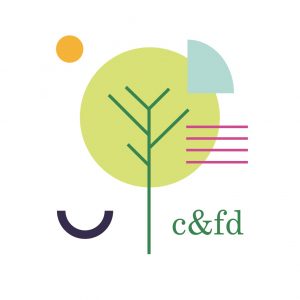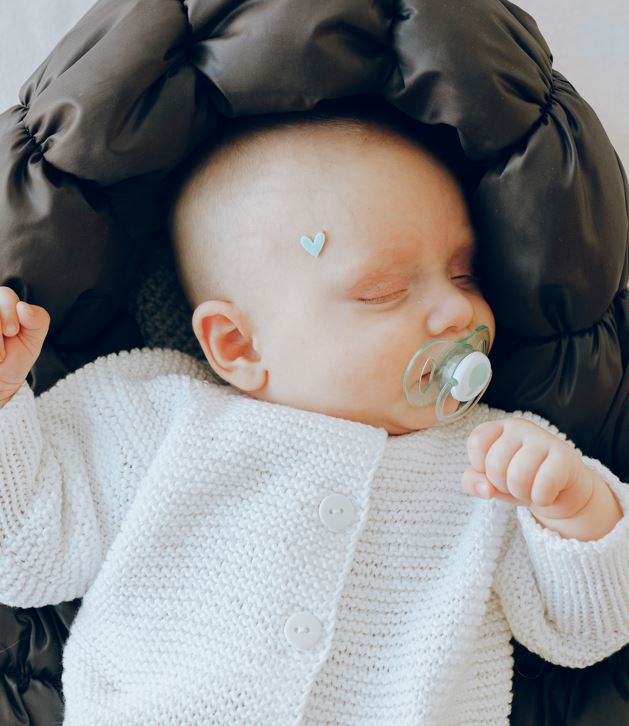By Madison McClure and Austin White, Child and Family Development
Torticollis, plagiocephaly, brachiocephaly, and cranial bands – oh my! You may have heard these words before but what do they mean?
What is torticollis? Torticollis, or congenital muscular torticollis, is Latin for “twisted neck.” It describes when a baby’s head is constantly tilted to one side. Often times, the neck is also rotated towards the opposite direction.
What causes torticollis? Several neck muscles can be involved in torticollis although the most commonly referred to is called the sternocleidomastoid, or the SCM for short. When this muscle is tight, you will notice the baby prefers looking to one side, which is one component of the “twisted neck.” The SCM can become tight from positioning in the womb or after birth.
Often times, torticollis does not stop at the neck. It can begin to affect your child’s head shape. Here are some terms you might see in relation to torticollis . . .
Plagiocephaly is the flattening that occurs on one side of the back of the head, typically due to the preference for looking to one side from torticollis. The baby’s head is asymmetrical and resembles a parallelogram. This baby will have a strong preference of looking to one side and may have one cheek that is fuller than the other.
Brachiocephaly is flattening that occurs across the entire back of the head. This head shape is wide above the ears. This baby may have more tightness in the front of his or her neck and will typically have limited rotation to either side.
Schaphocephaly is flattening along both sides of the head. This head shape is long and narrow. This baby will have difficulty keeping his or her head in midline and will usually be rotated all the way to one side or the other.
Cranial bands, also referred to as “helmets,” are a type of orthotic used to correct a baby’s head shape specifically. Cranial bands are sometimes required for moderate to severe flattening although, early intervention with a comprehensive home program can limit the time required in a helmet. While the cranial band addresses the head shape, it does not address the muscular cause of the preference for looking to one side. In other words, a cranial band should not replace physical therapy, as it addresses different aspects of the condition.
Some things to think about if you are concerned about the possibility of torticollis:
Does your baby prefer to look only to the right or only to the left when laying on its back or belly?
Can you easily move your baby’s head to each side? Does he or she fuss when going one direction?
Can you feel any small bumps in the muscle that runs on the side of his or her neck to behind the ear?
When feeding your baby, is it difficult for him or her to feed on one side?
Do you see any asymmetries in his or her head shape?
If you are concerned that your baby has a preference to look one way more than the other or if you see some asymmetries in his or her head shape, we encourage you to schedule an evaluation with a physical therapist. The earlier you can get your child in, the better. Current research indicates the following average treatment times based on age of referral . . .
| Age at referral | Average Treatment Time |
| Before 1 month of age | 1.5 months of treatment |
| 1-3 months | 5.9 months of treatment |
| 3-6 months | 7.2 months of treatment |
| 6-12 months | months of treatment |
While the neck and head shape may be of the most concern early on, torticollis can have lasting effects if left unresolved. Without treatment, you can typically see signs of unresolved torticollis as babies progress through their developmental milestones. One long term sign in particular is asymmetric weight bearing. The child may prefer to use one side of the body to hold his or her weight, which can impact tummy time, rolling, sitting, balance, stability in standing, crawling, and walking. With all of the developmental gross motor milestones impacted, it is important to look beyond solely plagiocephaly and head shape to ensure the torticollis and muscular causes are addressed to decrease the risk of delays down the road.
Things to look for with unresolved torticollis:
Consistently rolling to one side
“swimming” on the belly or pushing up to hands with only one arm
Consistently falling to the same side when sitting.
Crawls with one knee and one foot on the floor or “butt scoots”
Walks with a “limp”
If you notice any of the above signs or have further questions, please reach out to your doctor or our team of physical therapists for more information.
Reference: Physical Therapy Management of Congenital Muscular Torticollis: A 2018 Evidence-Based Clinical Practice Guideline From the APTA Academy of Pediatric Physical Therapy
Austin White and Madison McClure are Doctors of Physical Therapy at Child and Family Development. As a pediatric physical therapist, Madison provides aquatic therapy as well as services at our Midtown location. Austin provides pediatric physical therapy to clients at our Pineville location. She is well versed in working with clients of all ages who have a variety of rehabilitative needs.
Child & Family Development

Locations:
Mitdtown:
4012 Park Road, Suite 200
Charlotte, NC 28209
704.332.4834
Pineville:
11940 Carolina Place Parkway, Suite 200
Charlotte, NC 28134
704.541.9080
Website | Facebook | Instagram | Twitter



